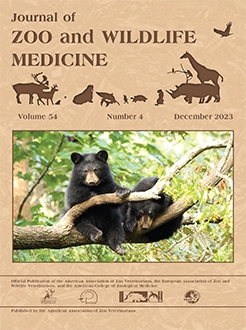The objective of this retrospective study is to summarize causes of disease and mortality in maned wolves (Chrysocyon brachyurus) in the North American Species Survival Plan Program (SSP) population. This information will inform and enhance animal health, husbandry, and conservation efforts. Pathology reports were requested from all zoological institutions housing maned wolves between 1930 and 2021. Data were reviewed and cause of death (COD) and reported diseases were summarized and compared by age group, organ system and disease process. One hundred and seventy-one wolves, 82 females and 89 males, met the inclusion criteria. The majority were geriatric (>11 yr; n = 96) or adult (2–11 yr; n = 67). Noninfectious diseases were the most common COD by process (n = 94; 54.9%). For COD by organ system, diseases of the digestive (n = 41) and urinary (n = 34) systems were most common. Neoplasia was the most common noninfectious COD and was the primary COD in 37 wolves (21.6% overall; 39.4% of noninfectious diseases). A total of 145 benign (n = 72) and malignant (n = 73) neoplasms were diagnosed in 44 individuals. Dysgerminoma was the most commonly reported tumor (n = 18), and was the most common neoplastic COD (n = 8). Cystinuria or urolithiasis (n = 71) and gastritis, enteritis, enterocolitis, or colitis (n = 50) (overall and grouped in each system due to presumed common underlying cause) were also common but were more often reported as comorbidities than as COD (n = 16 and n = 11, respectively). Infectious COD were reported in 17 wolves and included babesiosis (n = 4), acanthocephalans (n = 2), and one viral infection. Infections with a variety of bacteria in different organ systems were a COD in eight wolves.
How to translate text using browser tools
9 January 2024
A RETROSPECTIVE STUDY OF DISEASE PROCESSES IN MANED WOLVES (CHRYSOCYON BRACHYURUS) IN NORTH AMERICAN ZOOLOGICAL INSTITUTIONS WITH EMPHASIS ON UROLITHIASIS, INFLAMMATORY BOWEL DISEASE, AND NEOPLASIA
Magdalena Marcinczyk,
Nucharin Songsasen,
Elizabeth E. Hammond,
Georgina DeCesare,
Melissa Rodden,
Denise McAloose





